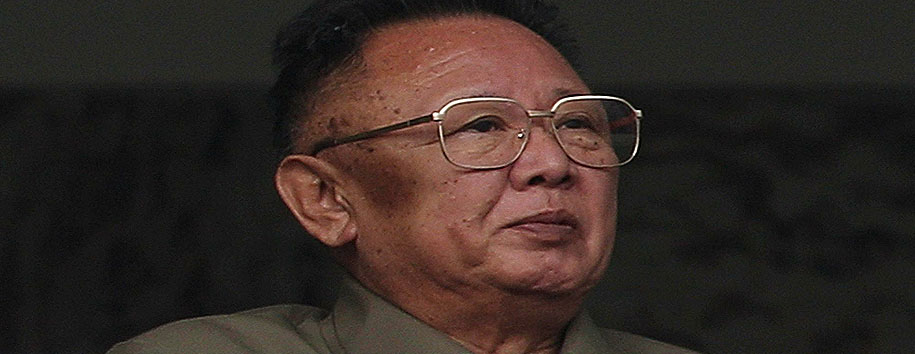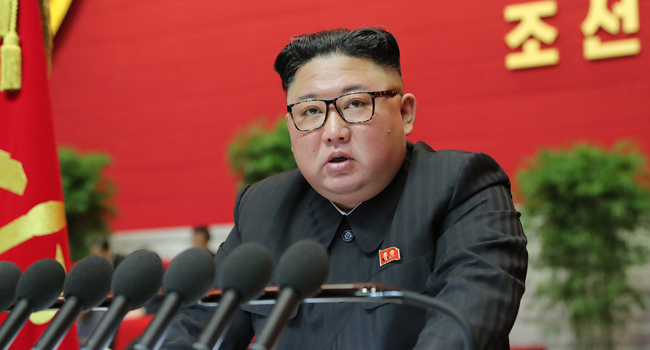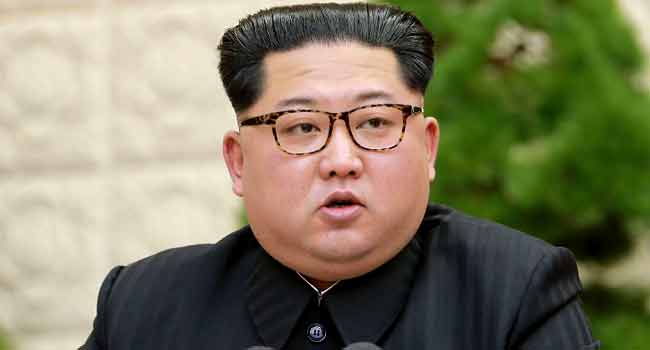
Kim Jong-Il who was a temperamental tyrant was the head of a reclusive state whose economy kept plunging into poverty, unchallenged while in power,a womaniser and movie buff who vexed the world with his development of nuclear arms programme plus an arsenal of missiles for the purpose of attacking his neighbours; Japan and South Korea.
The North Korean Leader was said to have died of a heart attack while on the journey.
Kim had been portrayed as a criminal mastermind behind deadly bombings, a jovial dinner host, a comic buffoon in Hollywood movies.
He was thought to have suffered a stroke in August 2008.
Kim jong-Il took over North Korea in 1994 when his father and founder of the reclusive state Kim Il-sung, known as “the Great Leader”, died.
Kim Jong-il, famed for his bouffant hair-do, platform shoes and jump suits, slowly emerged from his father’s shadows to become one of the world’s most enigmatic leaders who put North Korea on the path of becoming a nuclear power.
His state was also frequently cited as a threat to global stability.
Despite being on the world stage longer than most world leaders, little was known about Kim.
Kim had a host of titles in North Korea, but president was not one of them.
Kim Il-sung was given the posthumous title of president for life, while his son’s most powerful posts included the chairman of the National Defence Commission, the real centre of power in North Korea, and Supreme Commander of the Korea People’s Army.
Kim Jong-il was born on Feb. 16, 1942, at a secret camp for rebel fighters led by his father near Korea’s famed Mount Paektu.
Analysts say he was likely born in the Soviet Union when his father was with other Korean communist exiles receiving military and other training.
His official biography said that in elementary school he showed his revolutionary spirit by leading marches to battlefields where Korean rebels fought against Japanese occupiers of the peninsula.
By the time he was in middle school he had shown himself to be an exemplary factory worker who could repair trucks and electric motors.
He went to Kim Il-sung University where he studied the great works of communist thinkers as well as his father’s revolutionary theory, in a systematic way.
North Korea analysts said however, Kim lived a life of privilege in the capital, Pyongyang, when his family returned to the divided peninsula in 1945.
The Soviets later installed Kim Il-sung as the new leader of North Korea and the family lived in a Pyongyang mansion formerly occupied by a Japanese officer.
Kim Jong-il’s younger brother mysteriously drowned in a pool at the residence in 1947.
Kim likely spent many of his younger years in China to receive an education and to keep him safe during the 1950-1953 Korean War.
After graduating from college, Kim joined the ruling Worker’s Party of Korea in 1964 and quickly rose through its ranks. By 1973, he was the party’s secretary of organisation and propaganda, and in 1974 his father anointed him as his successor.
Kim gradually increased his power in domestic affairs over the following years and his control within the ruling party greatly increased when the younger Kim was given senior posts in the Politburo and Military Commission in 1980.
Intelligence experts say Kim ordered a 1983 bombing in Myanmar that killed 17 senior South Korean officials and the destruction of a Korean Air jetliner in 1987 that killed 115.
He is also suspected of devising plans to raise cash by kidnapping Japanese, dealing drugs through North Korean embassies and turning the country into a major producer of counterfeit currency.
He enjoyed ogling Russian dancing girls, amassing a wine cellar with more than 10,000 bottles and downing massive amounts of lobster and cognac.
Kim piloted jet fighters — even though he travelled by land for his infrequent trips abroad.
He penned operas, had a photographic memory, produced movies and accomplished a feat unmatched in the annals of professional golf, shooting 11 holes-in-one on the first round he ever played.
When he first took power in 1994, many analysts thought Kim’s term as North Korea’s leader would be short-lived and powerful elements in the military would rise up to take control of the state.




